Burkina Faso — translated as “country of upright people” — is one of the world’s poorest countries (172 of 182 countries, according to the United Nations Development Programme).
Rural areas in Burkina Faso are characterized by a lack of basic infrastructure like health centers, schools, water and electricity. This lack also encompasses localities farthest from the center of the country, the capital city.
Eighty percent of the Burkinabe live in rural areas, mostly in circular huts made of mud, roofed with straw in a pyramid shape. According to the Ministry of Economy and Finances, 31.1 percent of the Burkinabe population lives in food insecurity.
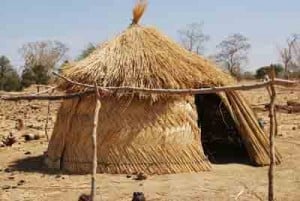
The Fulanis — nomadic cattle keepers — mostly live in straw houses.
Urban Burkina is located primarily in the middle of the country. Basic infrastructure is generally intact, yet low-income dwellers in some cities have only limited access to it.
The rich live in big houses and drive expensive cars. Housing is more modernized in cities. There are homes covered with metal sheets; some are even one-story.
However, the outskirts of cities are close to rural environment realities. Buildings are restricted and marked by a lack of infrastructure.
Dietary Habits of the Burkinabe
To is the most common food eaten in Burkina Faso, especially in rural environments where food is less diversified. It is a paste made from the millet or corn flour. To is eaten with okra sauce, baobab leaves or sorrel sauce, etc.
Rice is also largely consumed in the country but remains a luxury for households mainly in villages. Supplementary food staples are made of tubercles and beans. In fact, what is eaten in urban Burkina can be found in rural Burkina.
Local Issues
Eighty percent of the population farms and raises livestock. Farmers are subject to climate uncertainties such as drought and floods. These phenomena often lead to food crises. The rainy season is from July to September.
Malaria epidemics make victims especially of children in spite of the government’s medical policy. In 2007, according to the National Program Against Malaria, more than 5 million cases of malaria were recorded in all health care centers of the country, with nearly 12,000 deaths.
AIDS also leaves many children orphans. According to the United Nations HIV program, about 130,000 people live with HIV or AIDS in the country and half of them are women. It is believed that about 10,000 children live with the virus.
The urban areas also face problems related to sanitation and pollution. This year floods in the capital city affected 150,000 people. Many children were obliged to attend classes in makeshift schools.

Examples of child development centers in urban Burkina include: BF-103-105, 107-109, 112, 116, 117, 123, 125, 128, 129, 150-154, 156, 157, 200, 201, 250-258, 300-307, 350-352, 354-357, 400-402, 450-461, 500, 502, 660, 681, 683, 700.
Examples of child development centers in rural Burkina include: BF-106, 110, 111, 114, 118-123, 126, 127, 155, 158, 259, 308, 309, 353, 403, 680, 682, 701-703.
Educational Inequality Between Rural and Urban Areas
The school year is from October to July. The elementary school comprises children from 6 to 12 years of age. In 2008-2009, 58 percent of school-age children attended school. This rate hides disparities. It is higher in urban areas.
In rural Burkina, pupils walk to school about 2.5 kilometers on average per day. They lack school infrastructures in the countryside, and 0.2 percent of the schools don’t have a classroom. Students often follow the courses in makeshift schools. Only 1.1 percent of schools are enclosed.
In urban environments, pupils go to school by bicycle, bus or they are taken by their parents. The schools and teachers are more numerous than in the countryside. Pupils in private schools have school uniforms. The rate of attendance is about 90 percent. On the national level, the ratio of pupils to teachers is 55-to-1.
Cultural and Religious Diversity
The country counts about 60 ethnic groups, each one speaking a specific language.
Mooré (the language of the majority ethnic group, Moosé), Dioula (in the west), Fulfulde (north, language of Fulani), Gourmantchéma (east) are the most-spoken languages.
The culture is as diversified as the ethnic groups. According to the Ministry of the Culture, 50 percent of the rural population is animist.
Gourmantché people bite sand to make predictions; the Bobo people consult sacred silurus. Muslims account for 50 percent of the population, and Christians (Protestant and Catholic) represent 10 percent.
Religious tension is almost nonexistent in Burkina. According to many people, rakire (cross-ethnic jokes) allows a peaceful cohabitation of the various ethnic groups and religions. Christianity is practiced more in towns than in the countryside.
Typical Burkinabe Phrases
In Burkina, typical phrases are common in both urban and rural regions.
- Boug ninga sen dita taama segd n pussa sebga a zaame. The goat which eats shea must say thank you to the wind which made it fall (Mossi saying). This saying encourages people to be grateful.
- O nisaalo pia taana lie a maa, o naa kan fidi hondi saani lie yena ba. Man has two feet, but cannot follow two ways at the same time (Gourmantché saying). This saying invites sincerity and condemns duplicity.
- Jinga didoua ba pè moum.”One hand alone cannot collect flour (Gourounsi saying). This saying that is widespread in the country preaches unity.
- Oognou lègan tao chèchan, lègan yorgan yo heltorton. A branch should be folded when it is still green (Fulani saying). Education must start when the child is still young.

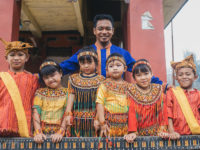
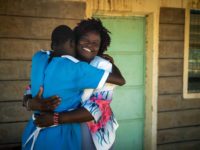
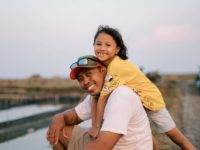
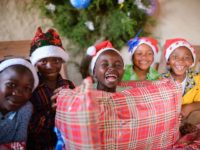


20 Comments |Add a comment
What about center BF0321?
Hello Anne! The center BF0321 is in a rural part of Burkina Faso.
Hi, I was looking at the center numbers in this post but didn’t come up with BF-476 at which we sponsor Martin. I live in a very rural area and often wonder if he does too. Since we’ve just sponsored him for a year, his letters have not given indication. He did say he had a pet goat though!
Hi Lois! Martin lives in a rural area.
Hello! The child I sponsor is in a center in BF-031. Is that urban or rural? Thanks!
Hi Shelly! This center is in a town that is in a very rural area of Burkina Faso.
Our sponsor child is in BF022, can you please tell me if that is urban or rural?
Thanks!
Hi Dustin! Your child is just outside of a pretty major city in the Tapoa Province of Burkina Faso :).
I love to get letters from my sponsored son. He is growing into a handsome young man. I’m waiting for a picture of him smiling or laughing. Is it a cultural thing not to smile for pictures? I want to see the JOY of the Lord on his face.
Whoops, now I can see it. I wonder why it didn’t show up before.
I cannot actually see the post. What does it say?
Thank you for this updated information. We sponsor Ismael in BF307. We are certain that he is blessing us way more than we are him.
Tomorrow is the Birthday of my sponsored child from BF 109. We are happy to be celebrating it with him. Happy Birthday Abdoul and God’s Blessings on you.
thanks for all the info I now know that We sponsor 1 boy in rural and one in urban BF. I had good searched BF to learn more but your post was so helpful. thanks again.
Thank you so much for this!! I sponsor Samiratou in BF 202.
Thanks so much for posting this! It made my week!! But how do you know what center number they are in? I just know the name of the project.
On your child number, the first two letters represent the country BF=Burkina Faso, and the first three numbers are the center.
For exemple BF1031111, the center would be “103”.
Great information! We have some friends who are serving in Burkina. They have mentioned how wonderful the country is and much of a need there is. Thanks for sharing!
We sponsor Timothee in BF 305!! Thanks for the info.
Thank you for this wonderful post! We sponsor a child in BF459.